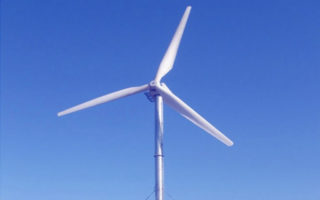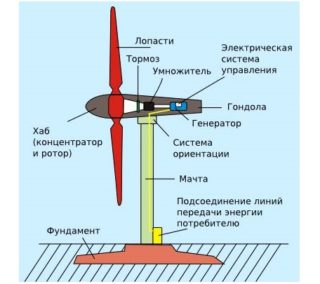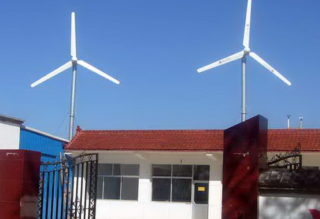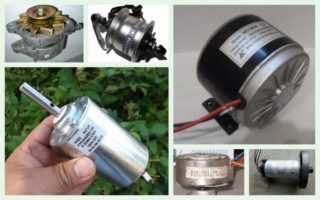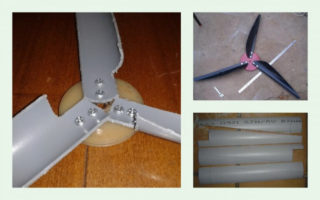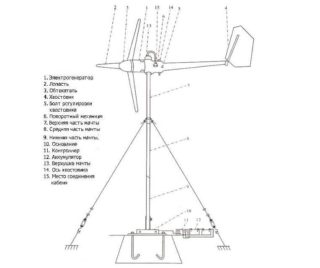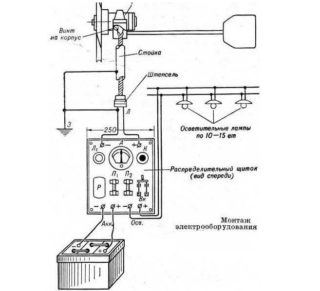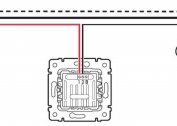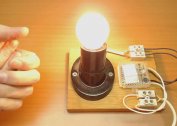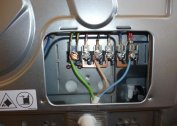In urban conditions, a stable system for generating electricity is being created. Interruptions are rare and quickly resolved. In the countryside, it is quite difficult to create uninterrupted power, so people are looking for sources of alternative energy. These include wind generators that allow you to receive electricity from the wind. They can also be called windmills, wind generators. You can buy or make a windmill yourself. It will generate enough energy to fuel household appliances.
Operating principle
Under the influence of wind forces, the blades of the device begin to rotate, which drive the rotor. Thanks to the stator winding, the resulting mechanical energy is converted into electric current. Under the action of the rotation force, the resulting electricity is stored in the battery.
The amount of energy received directly depends on the strength of the wind - the stronger it blows, the more electricity will be stored in the battery.
During turns, the axis also rotates, which is connected to the main rotor. 12 magnets are fixed on it, which rotate in the stator. This creates an alternating electric current of the same frequency as that flowing in outlets.
The resulting alternating current can be transmitted over long distances, but it cannot be accumulated. Therefore, it must be converted to direct current. The process is carried out using an internal electronic circuit in the turbine.
To obtain large volumes of energy, wind parks with a large number of installations are created. They are enough to provide energy for several houses.
The use of wind generators
Windmills for electricity can be used in the following options:
- autonomous work;
- collaboration with solar panels;
- work with a backup battery;
- in parallel with the generator (diesel or gasoline).
To illuminate the summer cottage, a wind force of 45 km / h is enough. The turbine in this case will generate 400 watts of electricity.
Choosing a purchased windmill
The best wind generators are produced in Germany, Denmark and France. These countries produce plants that can operate in the private sector, on farms, and in retail outlets. In Russia, alternative energy sources are poorly distributed.
When buying a wind power generator, you need to understand for what purposes it is used. There are different models - with increased efficiency, vertical and horizontal, bladeless. You also need to understand that the wind turbine has an efficiency of about 60% and depends directly on the wind speed.
When buying a generator for a summer residence, preference should be given to installations of 1-3 kW. A small power inverter is also required. For a private house, such a model is not suitable, especially if someone is constantly living in it. In this case, it is better to choose a model with a high-capacity battery. To quickly charge it, you will need a high-power generator. The best choice is a wind turbine with a diesel generator and a solar battery.
Widespread commercial wind generators. Energy from them is supplied to enterprises in which there is a lack of electricity supply.
You can save money if you make windmills to generate electricity yourself.
Making a makeshift windmill
A home-made wind generator can be used as a primary or secondary energy source. As an auxiliary device, it can power the lamps in the house and on the street, warm the water in the boiler.As the main source of electricity, it can fuel all household appliances, heating systems and the lighting group. Self-made windmill is more profitable than buying a store model. Devices up to 5 kW can cost up to 200,000 rubles, their repair is also expensive.
The main components of the wind generator
Before you make a wind power station with your own hands, you need to collect the necessary components. The following details will be required to create a windmill:
- Blades. They can be made of various materials.
- Generator. You can assemble it yourself or purchase it ready.
- The tail part. Helps the movement of the blades in the direction with the highest possible efficiency.
- Multiplier. Allows you to increase the rotor speed.
- Mast for fasteners. Clamp of all nodes.
- Tension cables. Do-it-yourself fix the entire construction of the wind farm.
- Battery, charge controller, inverter.
Beginners can create a generator according to the simplest scheme.
Generator assembly
A windmill can be created from any materials, even from plastic bottles. It will spin from the wind and make a noise. Assembly schemes of such devices are different - the axis can be installed vertically, horizontally. The device can be completely different sizes.
The basis of a homemade windmill is a generator. For its independent assembly you will need:
- Stator. It is made of two metal sheets that are cut in the form of a circle with a diameter of 500 mm. 12 neodymium magnets with a diameter of 50 mm are glued to each circle. The poles must necessarily alternate. In the second circle, the bands are shifted.
- Rotor. Consists of 9 coils with copper wire with a diameter of 3 mm. Each coil should have 70 windings. Placed on a non-magnetic basis.
- Axis. It is done in the middle of the rotor. For stability, the structure should be centered.
The rotor and stator must be installed at a distance of 2 mm. The windings should be connected so that a single-phase current source is obtained to receive electricity from the wind.
Blade mounting
In windy weather, up to 3.5 kW of power can be obtained from a home-made wind farm. On average, this figure will be about 2 kW. In the simplest horizontal generator, three blades are made. They can be made from the following materials:
- Wood. The disadvantages include the formation of cracks during operation. In the future, blade replacement is required.
- Polypropylene. This is the best option for wind generators with low power.
- Metal. It is considered the most durable, high-quality, durable and reliable material for the blades of a windmill. It is recommended to choose duralumin for such purposes - it is reliable and not very heavy.
The most difficult part in creating a wind generator is getting a balanced structure. Subject to all the nuances and correct calculations, the design will serve reliably and will not be damaged.
When the blades are created, they should be installed together with the rotor on the mounting pad. The tail part is fixed on it.
Launch
It is important to choose the right place where the windmill will be located. The element should be placed vertically and as high as possible so that it falls into the zone of strong winds. There should not be any large buildings and trees, as well as other objects that will interfere with the circulation of air flows in the windmill for electricity.
When the assembled installation starts working, you need to connect a multimeter to it. It joins the generator branch to check for voltage. When it is registered, it can be considered that the windmill is ready for full operation. Next, the scheme for supplying the received power to the house and other objects is thought out.
Connection in the house
To the wind installation you need to connect household appliances that will be powered from it. To do this, you need to purchase an inverter converter with an efficiency index of 99%. Then there will be minimal losses when converting direct current to alternating current.
There will be 3 nodes in the case:
- Battery. Accumulates energy.
- Charge controller. Responsible for battery life.
- Converter. Converts direct current to alternating current.
Power equipment can be installed on devices operating at a voltage of 12-24 V. Then an inverter converter is not required.
